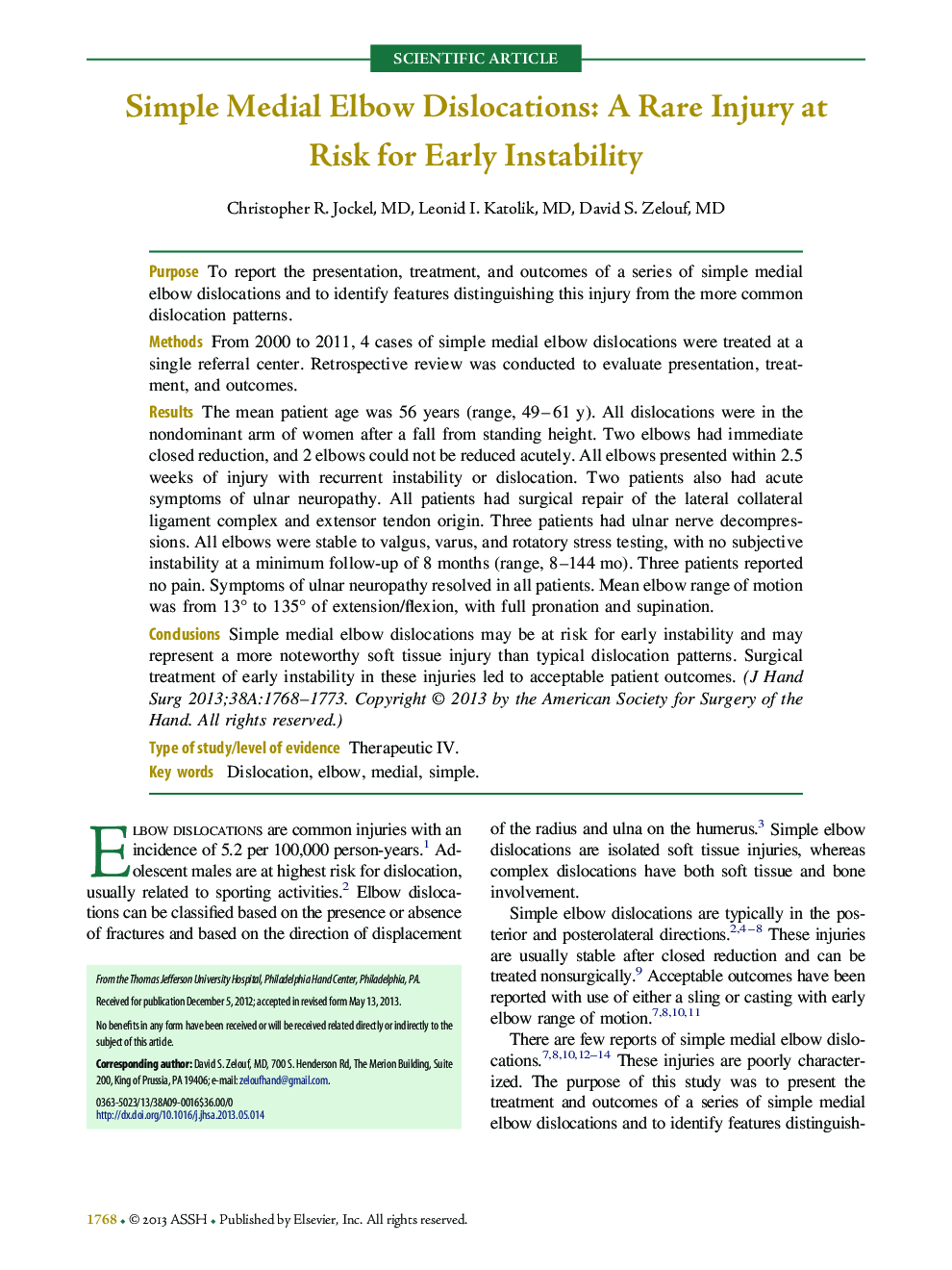| Article ID | Journal | Published Year | Pages | File Type |
|---|---|---|---|---|
| 4067153 | The Journal of Hand Surgery | 2013 | 6 Pages |
PurposeTo report the presentation, treatment, and outcomes of a series of simple medial elbow dislocations and to identify features distinguishing this injury from the more common dislocation patterns.MethodsFrom 2000 to 2011, 4 cases of simple medial elbow dislocations were treated at a single referral center. Retrospective review was conducted to evaluate presentation, treatment, and outcomes.ResultsThe mean patient age was 56 years (range, 49–61 y). All dislocations were in the nondominant arm of women after a fall from standing height. Two elbows had immediate closed reduction, and 2 elbows could not be reduced acutely. All elbows presented within 2.5 weeks of injury with recurrent instability or dislocation. Two patients also had acute symptoms of ulnar neuropathy. All patients had surgical repair of the lateral collateral ligament complex and extensor tendon origin. Three patients had ulnar nerve decompressions. All elbows were stable to valgus, varus, and rotatory stress testing, with no subjective instability at a minimum follow-up of 8 months (range, 8–144 mo). Three patients reported no pain. Symptoms of ulnar neuropathy resolved in all patients. Mean elbow range of motion was from 13° to 135° of extension/flexion, with full pronation and supination.ConclusionsSimple medial elbow dislocations may be at risk for early instability and may represent a more noteworthy soft tissue injury than typical dislocation patterns. Surgical treatment of early instability in these injuries led to acceptable patient outcomes.Type of study/level of evidenceTherapeutic IV.
